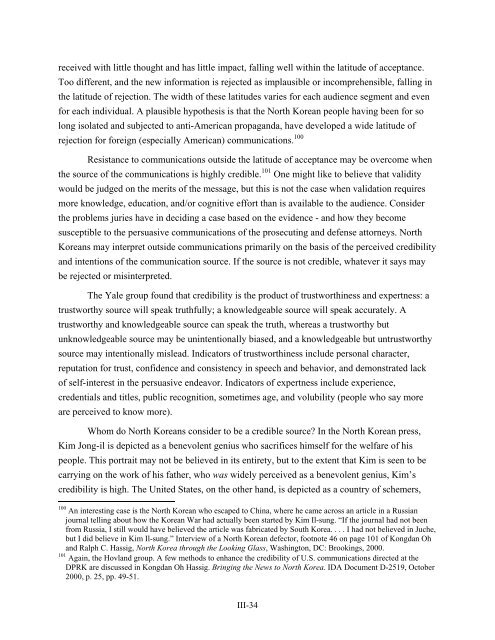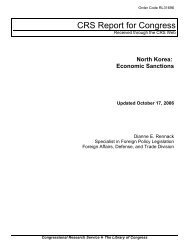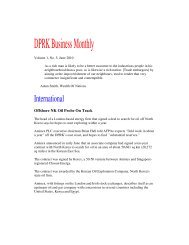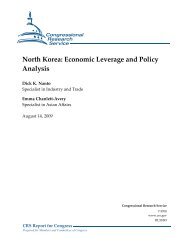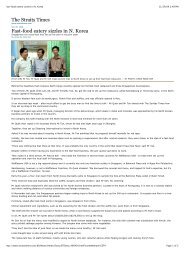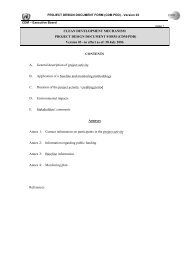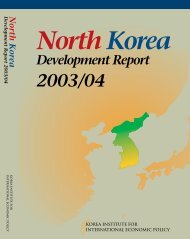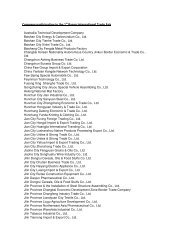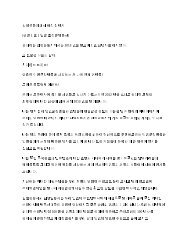North Korean Policy Elites - Defense Technical Information Center
North Korean Policy Elites - Defense Technical Information Center
North Korean Policy Elites - Defense Technical Information Center
You also want an ePaper? Increase the reach of your titles
YUMPU automatically turns print PDFs into web optimized ePapers that Google loves.
eceived with little thought and has little impact, falling well within the latitude of acceptance.<br />
Too different, and the new information is rejected as implausible or incomprehensible, falling in<br />
the latitude of rejection. The width of these latitudes varies for each audience segment and even<br />
for each individual. A plausible hypothesis is that the <strong>North</strong> <strong>Korean</strong> people having been for so<br />
long isolated and subjected to anti-American propaganda, have developed a wide latitude of<br />
rejection for foreign (especially American) communications. 100<br />
Resistance to communications outside the latitude of acceptance may be overcome when<br />
the source of the communications is highly credible. 101 One might like to believe that validity<br />
would be judged on the merits of the message, but this is not the case when validation requires<br />
more knowledge, education, and/or cognitive effort than is available to the audience. Consider<br />
the problems juries have in deciding a case based on the evidence - and how they become<br />
susceptible to the persuasive communications of the prosecuting and defense attorneys. <strong>North</strong><br />
<strong>Korean</strong>s may interpret outside communications primarily on the basis of the perceived credibility<br />
and intentions of the communication source. If the source is not credible, whatever it says may<br />
be rejected or misinterpreted.<br />
The Yale group found that credibility is the product of trustworthiness and expertness: a<br />
trustworthy source will speak truthfully; a knowledgeable source will speak accurately. A<br />
trustworthy and knowledgeable source can speak the truth, whereas a trustworthy but<br />
unknowledgeable source may be unintentionally biased, and a knowledgeable but untrustworthy<br />
source may intentionally mislead. Indicators of trustworthiness include personal character,<br />
reputation for trust, confidence and consistency in speech and behavior, and demonstrated lack<br />
of self-interest in the persuasive endeavor. Indicators of expertness include experience,<br />
credentials and titles, public recognition, sometimes age, and volubility (people who say more<br />
are perceived to know more).<br />
Whom do <strong>North</strong> <strong>Korean</strong>s consider to be a credible source? In the <strong>North</strong> <strong>Korean</strong> press,<br />
Kim Jong-il is depicted as a benevolent genius who sacrifices himself for the welfare of his<br />
people. This portrait may not be believed in its entirety, but to the extent that Kim is seen to be<br />
carrying on the work of his father, who was widely perceived as a benevolent genius, Kim’s<br />
credibility is high. The United States, on the other hand, is depicted as a country of schemers,<br />
100 An interesting case is the <strong>North</strong> <strong>Korean</strong> who escaped to China, where he came across an article in a Russian<br />
journal telling about how the <strong>Korean</strong> War had actually been started by Kim Il-sung. “If the journal had not been<br />
from Russia, I still would have believed the article was fabricated by South Korea. . . . I had not believed in Juche,<br />
but I did believe in Kim Il-sung.” Interview of a <strong>North</strong> <strong>Korean</strong> defector, footnote 46 on page 101 of Kongdan Oh<br />
and Ralph C. Hassig, <strong>North</strong> Korea through the Looking Glass, Washington, DC: Brookings, 2000.<br />
101 Again, the Hovland group. A few methods to enhance the credibility of U.S. communications directed at the<br />
DPRK are discussed in Kongdan Oh Hassig. Bringing the News to <strong>North</strong> Korea. IDA Document D-2519, October<br />
2000, p. 25, pp. 49-51.<br />
III-34


